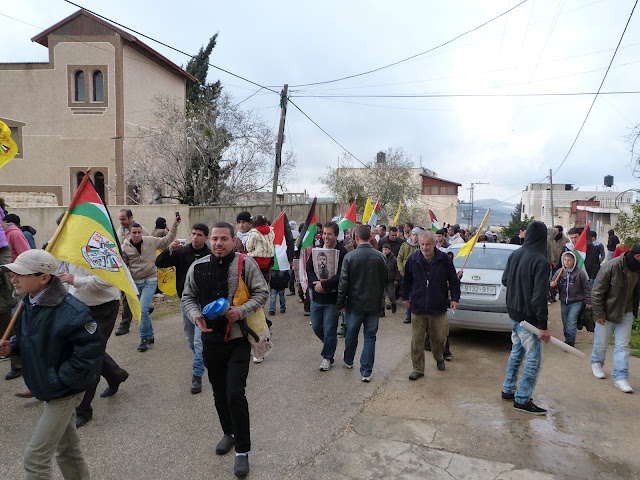Tag: Demonstration
-
In Photos: Clashes in Hebron’s Old city during a ‘Open Shudada Street’ rally
by Emilie Baujard 24 February 2012 | Demotix Hundreds of Palestinian and international activists protest in Hebron calling for the city’s al-Shuhada Street to be opened up to Palestinian traffic. The Israeli Army dispersed the protestors with stun grenades and tear gas. The Israeli Army entered the Old City to disperse the demonstration. Palestinian youth…
-
Meitar Checkpoint: Women demand an end to strip-searching by Israeli military and prison administration
12 February 2012 | International Solidarity Movement, West Bank A demonstration was held Sunday, February 12th at the Meitar checkpoint north of Beer Sheba in solidarity with Palestinian prisoners in the Naqab (Negev) region as well as their family members who must pass through this checkpoint to visit them. The demonstration was organised by the…
-
Kufr Qaddoum: Cut off road and electricity does not deter demonstrations
by Jonas Weber 10 February 2012 | International Solidarity Movement, West Bank Villagers and internationals assembled in Kufr Qaddoum after prayer time to demonstrate against the blocking of their main road to Nablus. The army cut off the electricity in the entire village as collective punishment for the ongoing demonstrations in Kufr Qaddoum. The villagers,…



